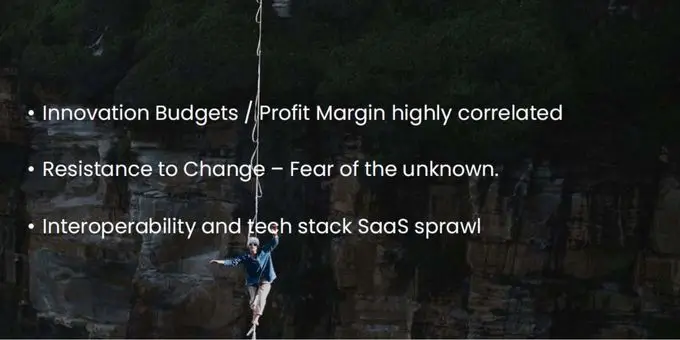How AI can transform practice - insights from our last tuesday talk

The industry is at a turning point.
Architects are not being replaced by AI—they’re being replaced by indifference.
– Jeames Hanley.
In a compelling night of conversation with Jeames Hanley, Digital Technology Lead at Buchan, our last Tuesday Talk explored the increasing importance of AI within the design industry.
Tracing the long history of innovations, we walked from modularity concepts and computational design through to the emergence of AI and parametricism, all significant advancements on the road to the AI we know today.
Hanley addressed the challenges the industry faces,

Within the changing landscape of technology, there is a demonstrated correlation between innovation budgets and profit margins. Looking ahead to the importance of future skills, the ability to implement and work with AI is becoming a top-ranking skill for architects alongside digital design and project management skills.
There are a variety of software and tools that can be used in different facets of architecture, including graphics, BIM, reality capture, and environmental analysis:

The core focus should be the strategic implementation of AI in architectural practice and tailoring it to enhance productivity, decision-making, and profitability for your business.
Hanley stressed the importance of tailoring AI solutions to specific business needs and the benefits of having a well-defined AI strategy.
An AI strategy can:
- Identify projects that offer a strong return on investment
- Outline steps to enable AI projects to smoothly transform ideas into solutions
- Provide clear plans for managing, analysing, and leveraging data for AI initiatives
In a recent RIBA AI Report 2024, a survey question asked: “Have you received any formal training in using AI tools for architectural design?”
60% of people answered – NO
This indicates one of a few common roadblocks to AI adoption:
- Insufficient data
- Limited talent pools
- Lack of AI knowledge
- Misalignment of strategy
We need to be “productively curious” as we move towards a truly digital future.


*all images from Jeames Hanley’s presentation – Buchan Studio

